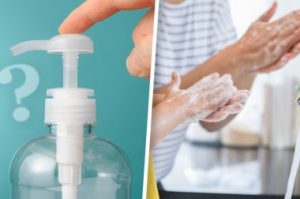No soap and water? Try hand sanitizers.
Washing your hands is one of the most important things you can do to avoid getting sick and spreading germs to people around you. The best way to prevent the spread of infections and decrease the risk of getting sick is by washing your hands with plain soap and clean water, advises the Centers for Disease Control and Prevention (CDC).
- Fight Germs. Wash Your Hands! (English)
- Acabe con los microbios. ¡Lávese las manos! (Español)
When washing with soap and water is not an option, use an alcohol-based hand sanitizer that contains at least 60% alcohol, usually ethyl alcohol. [You’ll find this information under ‘Active Ingredient’ on the package label.] Alcohol-based hand sanitizers can quickly reduce the number of germs on hands in some situations, but sanitizers do not eliminate all types of germs and might not remove harmful chemicals. And hand sanitizers are not as effective when hands are visibly dirty or greasy.
What’s ‘best practice’ for using hand sanitizers?
- Apply the product to the palm of one hand (read the label to learn the correct amount).
- Rub your hands together.
- Rub the product over all surfaces of your hands and fingers until your hands are dry.
One caution! Swallowing alcohol-based hand sanitizers can cause alcohol poisoning. Keep hand sanitizers out of reach of young children. Learn more here. Stay safe and healthy, Barb



